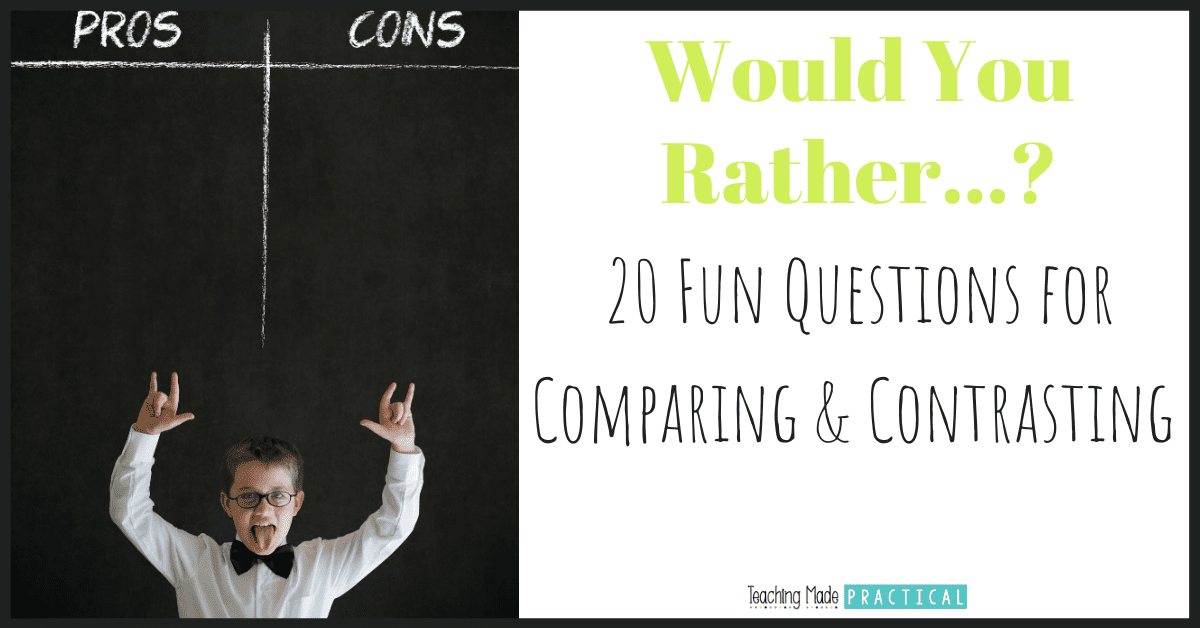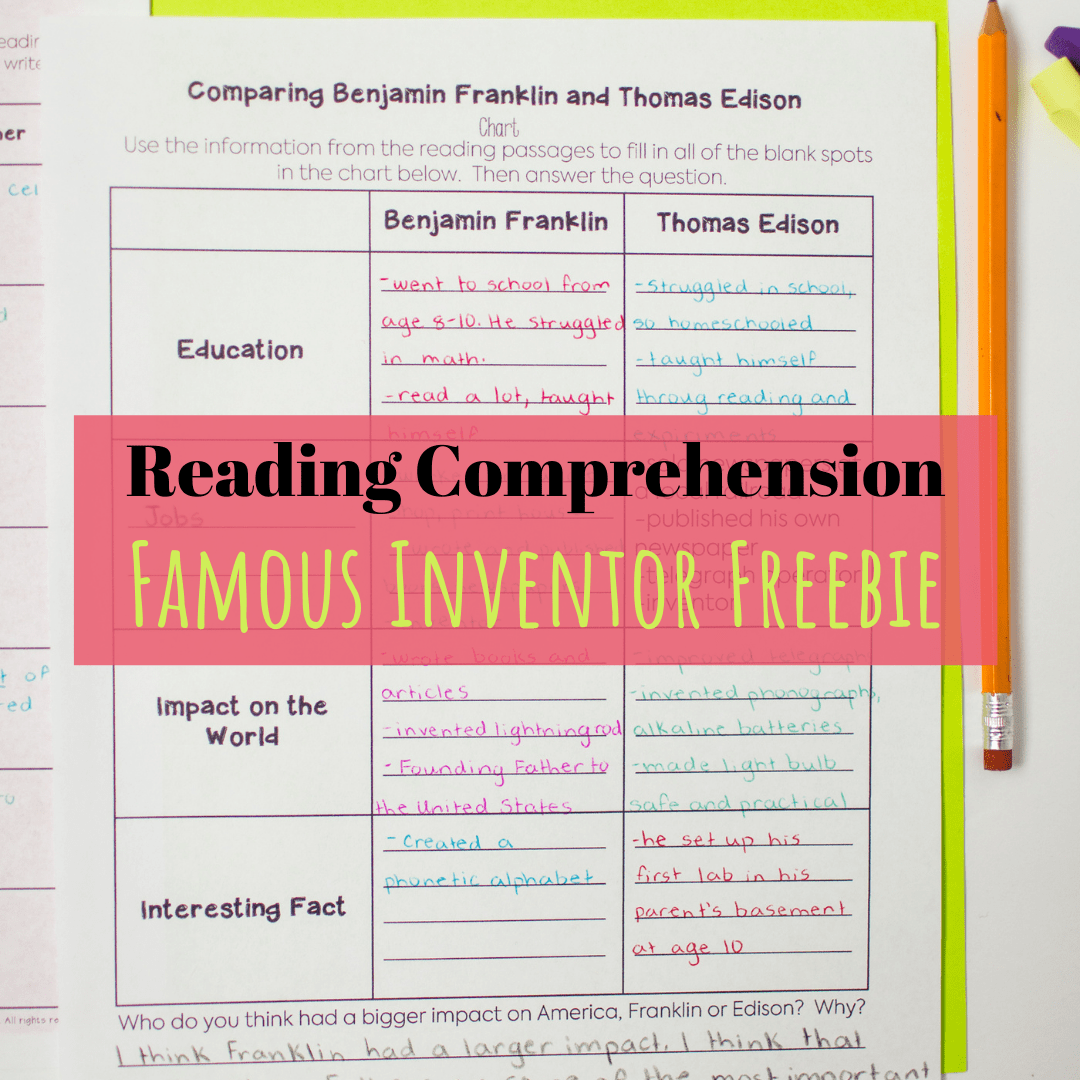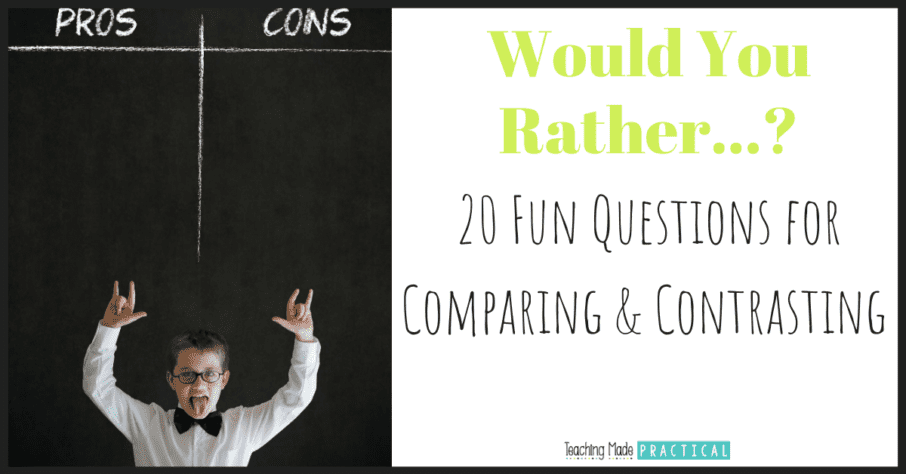
“Would You Rather” questions are often used as ice breakers or team builders in the upper elementary classroom. You might have used them to get your kids talking at the during a Christmas party or end of year party.
If used thoughtfully, however, “Would You Rather” questions can be used as a fun way to practice comparing and contrasting with your 3rd grade, 4th grade, or 5th grade students.
Why to Include "Would You Rather" Questions in Your Upper Elementary Reading Lessons
When answering a “Would You Rather” question, you have to make a choice between two options. Automatically, your mind will compare and contrast the two options, weighing the pros and cons of both.
Instead of having your students fill out a Venn Diagram or answer comprehension questions after reading a book, consider asking them some “Would You Rather” questions to have them think more critically while comparing and contrasting. This can lead to some interesting discussion and engaged students.
Or, check out these other engaging comparing and contrasting lesson ideas.
This is especially valuable when you require students to explain and defend their reasoning. Every time you ask a student a "Would You Rather" question, you should also ask them, "Why?" This requires students to think even more critically and use evidence from the text to explain themselves.
Some example questions for both fiction and nonfiction texts are below.
Possible "Would You Rather" Questions for Fiction Texts
- Would you rather be friends with the character ____ or ____?
- Would you rather live in the main setting from the book ____ or the book ____?
- Would you rather solve the problem that ____ faced or the problem that ____ faced?
- Would you rather write your own ending to the book ____ or keep the ending the author wrote?
- Would you rather invite the character ____ or the character ____ to your birthday party?
- Would you rather solve the problem the way the character ____ solved the problem, or in a different way?
- Would you rather give the main character an extra $10,000 or the ability to fly?
- Would you rather the main character be more generous or more respectful?
- Would you rather a sequel be written for the book ____ or the book ____?
- Would you rather change the setting of the story or the main character's character traits?
- Would you rather change the setting of the story to sometime in the past or sometime in the future?
You might also like these reading response activity ideas that can be used with ANY fiction text.
Possible "Would You Rather" Questions for Nonfiction Texts
- Would you rather meet the author of ____ or the author of ____?
- Would you rather the author add more captions or more maps to the book?
- Would you rather the author include more information about the topic ____ or the topic ____?
- Would you rather the author include more facts or opinions?
- Would you rather the author remove the photographs or the title/headings from the book?
- Would you rather read another book on the same topic or a book on a completely different topic?
- Would you rather the author include more difficult words or more easy words in the text?
- Would you rather learn more about this topic or write a paragraph about what you have already learned about the topic?
- Would you rather the author define the words you do not know within the text or adding a glossary as a text feature?
You might also like these higher-level thinking questions for teaching other reading skills or these reading response activities that can be used with ANY nonfiction text.
How to Use "Would You Rather" Questions to Compare and Contrast
There are a variety of ways to use questions like this in the classroom. For example, some of these questions make great writing prompts. After reading a text, you could have your 3rd grade, 4th grade, or 5th grade students answer one of the questions above as a quick check for understanding.
However, my favorite way to use “Would You Rather” questions in the classroom is through discussion. These questions will give students an opportunity to compare and contrast orally, and are also perfect for teaching students how to disagree nicely and defend and justify their opinions.
For a whole class discussion, have students go to two different sides of the room based on their answer to a “Would You Rather” question. Have both sides explain their reasoning and have a chance to consider the other side’s opinion.
Or, you could have partners or small groups discuss their answers to different “Would You Rather” questions. This allows for more students to orally share their opinion with others.
This is also a great filler activity when you have an extra 5 minutes to spare. Students can review what they have read, practice comparing and contrasting, have an opportunity to practice speaking in a nonthreatening setting, and practice defending their reasoning – all in 5 minutes!
Want a Compare and Contrast Freebie?

Download these reading passages with a compare and contrast activity for free and use it to today!


Comments 1
Great article.